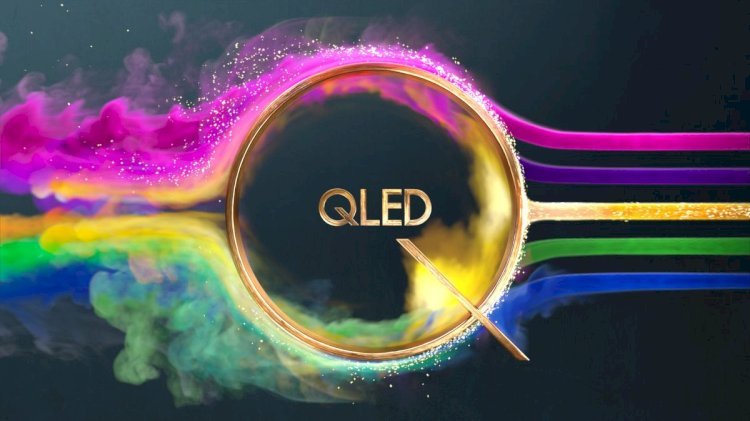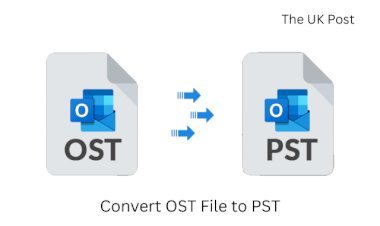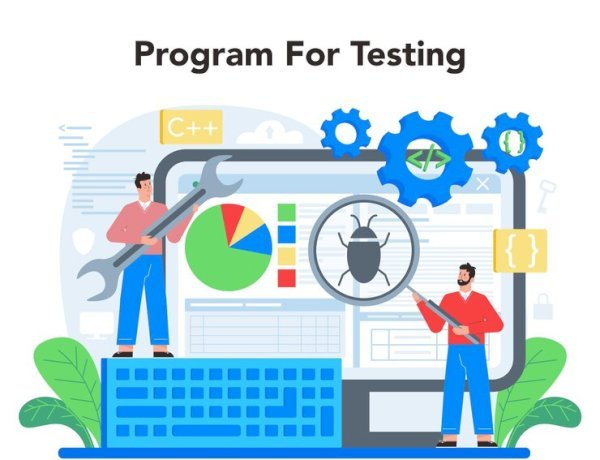What QLED Means: How QLED Technology Works in 2025
Discover what QLED means, how Quantum Dot technology works in 2025, and why QLED TVs deliver brighter, more vivid, and energy-efficient pictures.

If you have ever asked “what QLED means”, you are in good company. As of 2025, display technology has advanced significantly and TV buyers are confronted with terms like QLED, OLED, Mini-LED, MicroLED. Knowing what QLED means can help you make a better decision when choosing a new television. At its simplest, QLED stands for Quantum-dot Light Emitting Diode — a technology that enhances conventional LED-backlit LCD panels by using quantum dots to improve brightness, colour accuracy and efficiency. Over recent years the technology has matured further, making QLED TVs stand out in many living-rooms around the world. In this article we will explore what QLED means in depth, how it works, what its advantages and limitations are, how it compares with other display types, the current market data for QLED technology, and whether it is the right choice for you in 2025.
What QLED Means – Definition and Full Form

Image source: Pinterest.com
When you ask what QLED means, it is helpful to break the term down. QLED is an acronym for Quantum-dot Light Emitting Diode. “Quantum-dot” refers to nanoscale semiconductor crystals (quantum dots) which emit very precise colours of light when illuminated or excited. The “LED” part refers to the fact that the display uses an LED back-light behind an LCD panel (in the common case) rather than each pixel being self-emissive. These dots are typically placed in or near the back-light path of an LCD television to improve how the light is converted into colour. Because quantum dots can be tuned by size to emit different wavelengths (for example red, green or blue) the result is a display that can show a much wider colour gamut and higher brightness than older LED-LCD versions.
The term QLED was popularised by companies such as Samsung, which began strongly marketing “QLED TVs” in 2017 and beyond, and by 2025 many brands (including TCL, Hisense, and others) have adopted the label. Knowing exactly what QLED means thus allows you to understand that you are looking at a screen improved by quantum dots, rather than a completely different base technology like self-emissive OLED.
In essence, QLED is a matured LED-LCD architecture enhanced with quantum dot layers for better performance. Understanding this helps you separate marketing terms from technology and see real value behind the label.
How QLED Technology Works

Image source: Pinterest.com
To understand what QLED means in a practical sense, let’s walk through how the technology is built and how it functions. First, a back-light of blue LEDs shines light forward into the display. Instead of simply filtering that light via colour filters (as in ordinary LCD panels), a layer of quantum dots (sometimes called a Quantum-Dot Enhancement Film, or QDEF) sits in the light path. These quantum dots absorb part of the blue light and re-emit it at very precise wavelengths of red or green. The size and chemical composition of each quantum dot determine which wavelength it emits—smaller dots emit shorter wavelengths (like green/blue), larger dots emit longer wavelengths (like red).
After this conversion, the light passes through the LCD matrix and colour filters and is ultimately displayed on the screen. Because the quantum-dot layer converts light more efficiently (less wasted light, purer colours), the end result is a display capable of higher brightness, wider colour gamut, and better efficiency than older LED-LCD panels.
In 2025 many QLED TVs also incorporate Mini-LED back-lighting (thousands of tiny LEDs instead of a few large ones) and full-array local dimming for better contrast, fewer halo effects and improved dark-scene performance. What this means is that when you ask what QLED means, you’re not just referring to quantum dots, but to a refined display system: LED backlight → quantum dots → LCD panel → high-quality image processing.
Thus, the technology works by converting light from the backlight into a richer colour spectrum via quantum dots, and then controlling that light at the pixel level via LCD/control electronics. The net result is a richer viewing experience—brighter highlights, more vivid colours and better suitability for bright environments.
QLED vs Other Display Technologies

Image source: Pinterest.com
When you consider what QLED means, it is useful to compare it with other display types such as OLED, LED (non-quantum dot), and emerging QD-OLED. This comparison helps clarify strengths and weaknesses.
From the comparison it becomes clear that QLED occupies a strong position: it offers brightness and colour performance that outstrips standard LED/LCD and rivals OLED, while avoiding some of the known trade-offs of OLED (e.g., burn-in risk, lower brightness in some cases). When you ask what QLED means, you should see it as a technology that bridges the gap between affordability and high-end performance.
For a detailed side-by-side explanation, read this full guide on the difference between OLED and QLED.
Advantages of QLED Technology in 2025

Image source: Pinterest.com
When we look at what QLED means today, we see a set of meaningful advantages that reflect its maturity and real-world performance:
-
High Peak Brightness: Many top QLED models in 2025 are achieving peak brightness levels over 3,000 nits in HDR testing—some even exceeding 5,000 nits on large screen sizes. For example the Hisense 116UX in lab tests hit 5,441 nits of HDR brightness. Higher brightness means better performance in bright rooms and more impactful HDR highlights.
-
Wide Colour Gamut & Accuracy: Quantum dot layers allow QLED displays to cover close to 100 % of the DCI-P3 colour space and approach Rec. 2020 in some cases. This means richer, more accurate reproduction of filmmakers’ and game designers’ colour intent.
-
Low Risk of Burn-In: Because QLED uses an LED backlight rather than each pixel being self-emissive, the risk of permanent image retention (burn-in) is very low. This makes QLED more suitable for mixed-use scenarios like gaming, news tickers and long-session viewing.
-
Improved Durability & Efficiency: The quantum dots used in modern QLEDs are more stable, and advances in Mini-LED back-lighting and processing mean better efficiency and longer lifespan. Market reports show significant growth in quantum-dot display segments driven by improved materials and manufacturing.
-
Better Value for Many Buyers: In 2025, manufacturers are offering high-performance QLEDs with advanced features (120 Hz refresh rate, HDMI 2.1, Mini-LED back-light) at prices lower than equivalent OLED or QD-OLED models. This means that what QLED means translates into real-world value.
In short, when someone asks what QLED means, the answer is more than just “quantum dots”—it means a display platform capable of brightness, colour fidelity and performance suitable for modern viewing environments.
Limitations and Trade-offs of QLED Technology

Image source: Pinterest.com
No technology is perfect, and when learning what QLED means, it is equally important to understand what it doesn’t do. Here are some of the trade-offs:
-
Black Levels & Light Leak: Because QLED still uses a back-light behind the panel, some light can leak in dark scenes, resulting in blacks that are not as deep as OLED’s self-emissive pixels. While Mini-LED and many dimming zones help, the difference remains noticeable in dedicated dark-room cinema setups.
-
Viewing Angle Limitations: Some QLED models may show reduced contrast or colour shift when viewed from off-centre angles. While panel and coating technology have improved this, OLED generally retains an edge for ultra-wide viewing angles.
-
Marketing Confusion: Not all TVs labelled “QLED” perform equally. The term only guarantees quantum-dot enhancement, but other factors like back-light design, dimming zones, processing and panel quality vary widely. So knowing what QLED means doesn’t guarantee top performance unless you check specifics.
-
Cost for Premium Features: While many QLEDs offer great value, the very top models (with full-array local dimming, massive Mini-LED arrays, 8K, very low input lag etc.) still command high prices. Buyers expecting absolute perfection may still pay OLED or QD-OLED premiums.
-
Still Back-light Dependent: Even the best QLEDs rely on a back-light and light-modulating layer; self-emissive alternatives like OLED or MicroLED may eventually surpass QLED in overall picture quality in all metrics.
Understanding these limitations completes the answer to what QLED means—it means high performance, but with some architectural constraints.
How QLED Has Improved by 2025

Image source: Pinterest.com
When you ask what QLED means in 2025, you are referencing a technology that has evolved significantly. Here are key improvements:
-
Mini-LED & Thousands of Dimming Zones – Instead of a few large edge/back LEDs, many 2025 QLEDs use Mini-LED arrays (thousands of small LEDs) which enable finer local dimming, better contrast and fewer halo artifacts.
-
Advanced Quantum Dots and Materials – Many quantum dots today are cadmium-free, metal-coated for longevity and engineered for higher efficiency. This means better colour stability and less degradation over time.
-
AI & Smart Processing – Modern QLED TVs incorporate AI-driven processors that perform real-time upscaling, dynamic tone mapping, ambient light adjustment and motion enhancements. This makes the display more responsive and adaptive to different content and lighting conditions.
-
Gaming & Connectivity Features – In 2025, QLED models commonly include 4K@120Hz (and in some cases 8K support), HDMI 2.1 ports, Variable Refresh Rate (VRR), Auto Low Latency Mode (ALLM), and support for next-gen consoles. This makes QLED technology more relevant for gamers and tech-savvy users.
-
Market Growth & Adoption – The global QLED display market is estimated at USD 25.47 billion in 2025, and projected to reach ~USD 54.12 billion by 2033, with a CAGR of about 9.9%. Reports also indicate the QLED TV market itself reached about USD 17.8 billion in 2024, with forecasts to reach USD 51.7 billion by 2033.
These advancements reflect that when you ask what QLED means, you refer to a robust and mature display ecosystem, not just a marketing term.
Is QLED Worth Buying in 2025?

Image source: Pinterest.com
If you’re shopping for a new television in 2025, understanding what QLED means helps you decide whether it’s the right choice. Here’s a breakdown:
Choose QLED if you:
-
Watch mostly in bright or daytime environments where high brightness matters.
-
Want vivid colours and wide gamut without paying the highest possible price.
-
Use the TV for gaming or general purpose (streaming, sports, news) and want durability and low risk of burn-in.
-
Want excellent connection and refresh features (120 Hz, HDMI 2.1, VRR) at a better value point.
Consider alternatives (OLED / QD-OLED) if you:
-
Primarily watch in dark rooms and care deeply about absolute black levels and cinematic contrast.
-
Have many viewers seated at wide angles (for example a large lounge room) and need consistent picture from off-centre.
-
Are willing to pay more for top-tier premium performance and accept possible trade-offs like slightly lower brightness or burn-in risk (in OLED’s case).
In practical terms, QLED offers a strong performance-to-cost ratio in 2025. For most everyday viewers, the question what QLED means ends with: “a high-performance TV option that works well in most rooms, conditions and use-cases.”
The Future of QLED Technology

Image source: Pinterest.com
Looking ahead, the meaning of QLED is set to expand further. Some key future themes include:
-
Quantum-Dot Electroluminescent Displays (QDEL) – Research is underway into displays where quantum dots themselves emit light, removing the need for a back-light entirely. This could combine the best of QLED (brightness, colour) with the self-emissive pixel advantage of OLED.
-
Hybrid Technologies – Future displays might merge QLED with MicroLED or other self-emissive architectures, blurring the lines of what QLED means today.
-
Sustainability & Materials – With cadmium-free quantum dots, more efficient backlights and smarter power control, future QLEDs will likely consume less power and be more eco-friendly.
-
Broader Applications – The quantum dot display market is expanding beyond TVs into monitors, smartphones, automotive displays and AR/VR. Reports show quantum-dot display market size projected to grow sharply.
-
User Experience Enhancements – Features like ambient-light sensors, real-time scene recognition, personalised picture modes and integration with smart home/AI ecosystems will further broaden what QLED means to consumers.
As a result, when you ask what QLED means in the near future, you may get a broader and more advanced definition that includes new materials, display architectures, and usage scenarios.
Conclusion
Now that you know what QLED means, you’re equipped with more than just a definition. You understand that QLED stands for Quantum-dot Light Emitting Diode—a display technology that enhances traditional LED-backlit LCD TVs with quantum dots, delivering brighter highlights, wider colours, and better performance in many environments. In 2025, QLED is a mature and compelling choice that strikes a strong balance between value and performance. It sits comfortably between standard LED-LCD and self-emissive OLED, offering many benefits for everyday viewing, gaming, streaming and general recreation. While no technology is perfect, QLED is one of the most versatile and future-proof choices today. With the knowledge of what QLED means, you can shop, compare and choose a TV with confidence.
FAQs
1. What does QLED stand for?
QLED stands for Quantum-dot Light Emitting Diode. It describes a TV display that uses an LED back-light in combination with a quantum-dot layer to enhance brightness and colour.
2. Is QLED better than OLED?
It depends on the situation. QLED typically offers higher brightness, vivid colours and low risk of burn-in, which makes it excellent for bright rooms and mixed use. OLED delivers superior black levels and contrast, which makes it excellent for dark rooms and cinematic viewing.
3. Does a QLED TV still use an LCD panel?
Yes. Most QLED TVs use an LCD panel with an LED back-light and a quantum-dot enhancement layer. The quantum dots improve how the light is converted into colour, but the underlying architecture remains LED-LCD.
4. How long do QLED TVs last?
While lifespan depends on many factors (back-light usage, heat, processing, manufacturer), modern QLEDs benefit from improved quantum-dot materials and stable LED back-lights. Many models are built to last many years without significant degradation of brightness or colour.
5. What should I check when buying a QLED TV in 2025?
When you understand what QLED means, also check these features: peak brightness (nits), colour gamut coverage (DCI-P3, Rec.2020), back-lighting type & number of dimming zones (prefer full-array, Mini-LED), refresh rate (120 Hz+ for gaming), HDMI 2.1 support, viewing angle performance, and brand processing quality. Also ensure the “QLED” label reflects real quantum-dot enhancement and not just marketing.




























